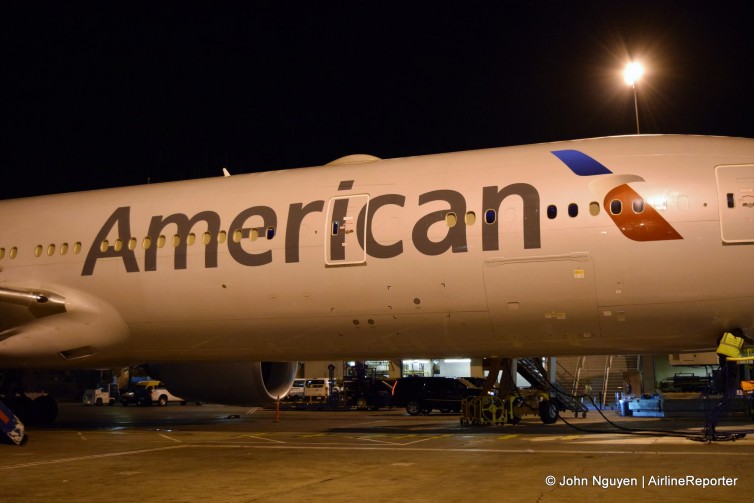
An American Airlines 777-300ER (N720AN) bound for SYD on the inaugural flight pushes back from Gate 41 at LAX.
Less than a week after covering American Airlines’ launch of their new Los Angeles-Sydney service, I found myself onboard Flight 73 on a last-minute holiday down under. The route featured American’s flagship Boeing 777-300ER, with my personal-favorite business class seat. In spite of holding status on both American and Alaska, which would entitle me to at least a little bit more leg and elbow room in coach, I willingly (!) chose to sit in a regular economy seat for a 15-hour flight… and managed to survive. A feat made even more impressive (or harrowing, depending on your point-of-view) by the fact that I was accompanied by my wife.
Now, I’d like to claim credit for taking one for the AirlineReporter team and be able to gloat for making the trip, but I’m not as magnanimous as my colleague JL, who flew a Spirit Airlines Bare Fare “for science.” There were very strategic, practical, and self-serving reasons for booking seats behind the curtain instead of in front of it.
I’m splitting my experience into two parts: first, about why I chose economy (this time), followed up with my actual flight review of American’s economy service to Sydney.
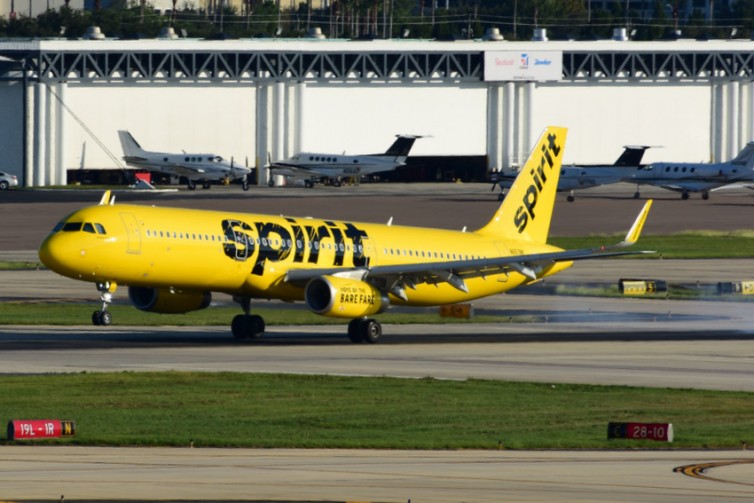
A Spirit Airlines Airbus A321 wearing the Bare Fare livery at TPA – Photo: JL Johnson | AirlineReporter
I paid a mere $16.11 for a one-way Spirit Airlines Bare Fare flight from Kansas City to Dallas. Crazy, right? It gets crazier $14.24 of that ticket went to the “Government’s Cut,” (Spirit’s words, not mine) that is, various government-imposed fees and taxes. Of the remainder, a single penny went towards the base fare, with the final $1.86 going to what Spirit refers to as “Unintended Consequences of DOT Regulations.” Depending on where you sit on the regulatory fence, the actual revenue from my Bare Fare was either a penny or $1.87.
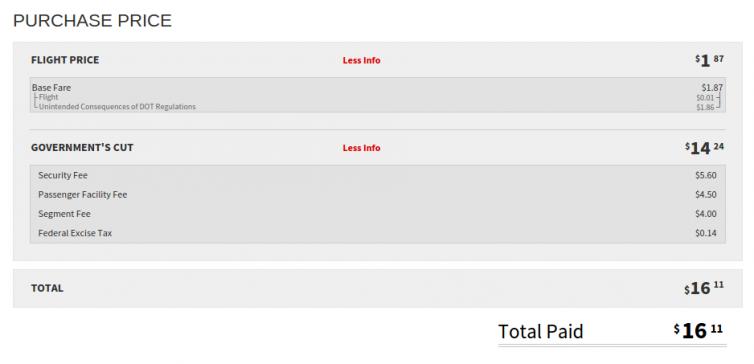
Spirit Airlines Bare Fare cost structure breakdown – Image: Spirit.com
Either way, the airline was bound to make money off of me from their various fees, right? After all, that’s what Spirit is known for: evil fees. But, what if I went totally bare and instead just paid only for “ass plus gas” (again, Spirit’s words, not mine). Do people actually do that? I did… for science.
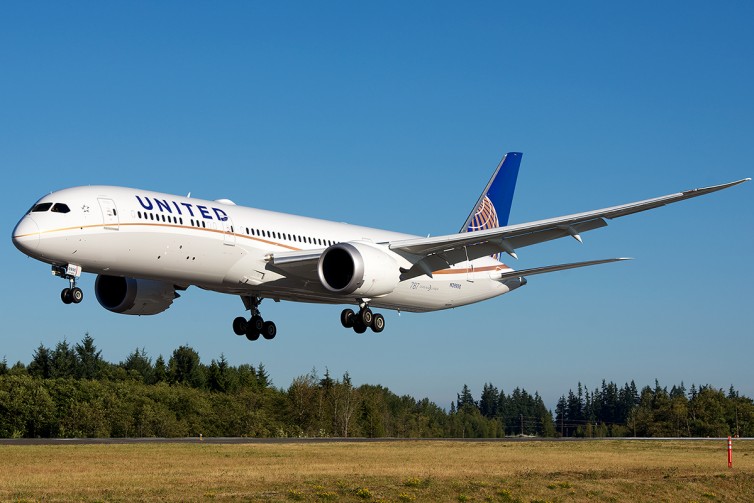
A United 787-9 touching down ’“ Photo: Bernie Leighton | AirlineReporter
United’s daily service from Los Angeles (LAX) to Melbourne (MEL), Australia is the world’s longest Boeing 787 Dreamliner flight. The long flight (UA98 is scheduled for 15 hours, 50 minutes) allowed me to not only put the 787-9 to the test, but also United’s Economy Plus product.
Flights from LAX to Melbourne take off in the late evening and arrive in the early morning, so the outbound flight is quite easy to sleep on, assuming you aren’t contemplating the remoteness of the vast Pacific Ocean. The routing typically takes the aircraft out on runway 25R, and after an eternity over open water, high above Kiribati, American Samoa, and Fiji, before crossing the Tasman Sea, leaving less than an hour of flying time over land.
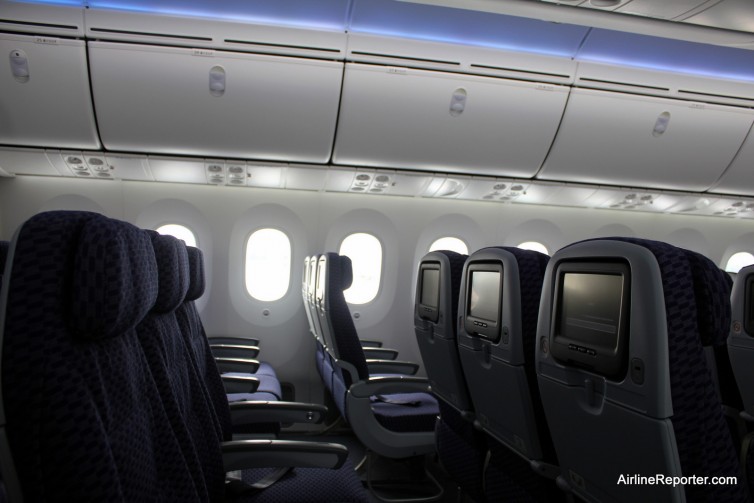
Economy Plus on the United 787
As you enjoy your breakfast, you can gaze out on a sunrise over the Australian Alps and observe the Dreamliner’s wings, which are nearly free of fuel, in their most upward-bent shape. I was excited for the flight, but not sure if United could come through during such a long trip.
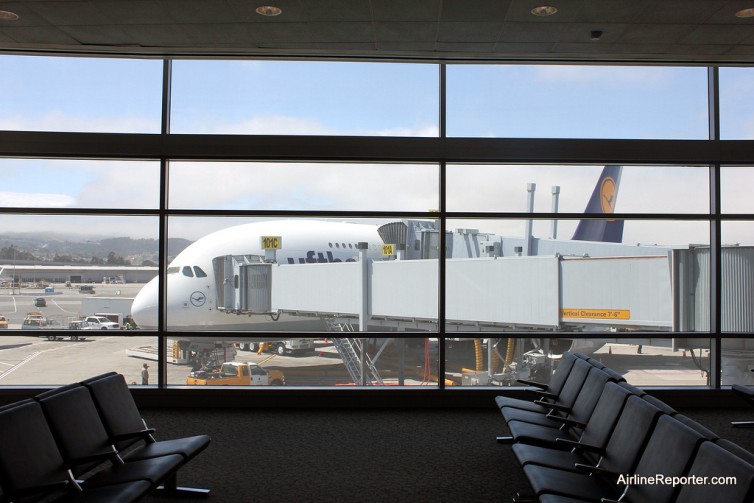
A Lufthansa Airbus A380 at SFO
Traveling from the Bay Area to Europe? Chances are you may find yourself on the Star Alliance trunk route from SFO to Frankfurt. I did recently as I kicked off a trip to Germany, India, and Southeast Asia, celebrating my final few months of freedom between a journalism job and medical school. In my experience, flying to Lufthansa’s ’œFraport’ mega-hub from San Francisco generally meant a trip on United’s venerable ’“ and noticeably aging ’“ 747-400s. While they are beautiful birds from the outside, they don’t make for the best long-haul economy class flights: no seatback screens, no power outlets (although that has since been corrected), and cramped seats, unless you can bump up to Economy Plus or better. Interested in something new, I leapt at the chance to try out Lufthansa’s A380 flight on the same route.
I was glad to be able to book the flight on United ticket stock (ticket number beginning with ’œ016’), which meant I earned both premier qualifying miles (PQMs) and dollars (PQDs) for the flight. With the current UA premier qualifying system, you earn PQMs when you book non-UA ticket stock with Star Alliance partners, but not the PQDs – which are needed for elite qualification.
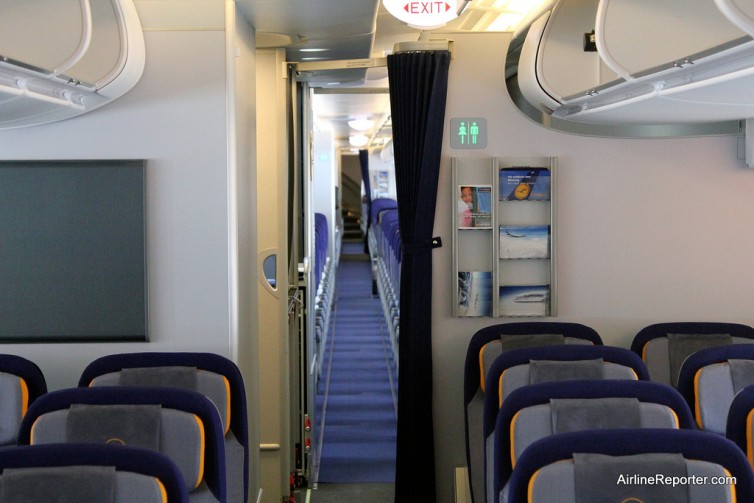
Heading to the back of the plane, to then go upstairs
Curiously, the confirmation code United provided me allowed me to manage my reservation on Lufthansa’s website, but did not work for online check-in. I found a Lufthansa-specific code buried in a separate email. A bit confusing, but not a huge deal. One downside of booking a Lufthansa-operated flight through United is that you are not always able to pick a seat in advance. That ended up being the case for this flight, and I was dreading the possibility of a back-of-the-bus middle seat. Luckily, seat availability was still good when I checked in online, even though the flight ended up being full.
I had only flown the A380 once before (on Emirates) and assumed that the upper deck was first and business class only. To my surprise, there was an ’œupper deck’ tab on the seat selection window during online check-in. It turns out that on Lufthansa’s newest layout for some of its A380s, there is a premium economy section in the front of the lower deck and a small section ’“ five rows, to be exact ’“ of standard economy at the back of the upper deck. I snagged a window seat at the front of the latter section, thrilled that I would finally get upper-deck bragging rights (though without the usual business class accouterments that usually go with it).
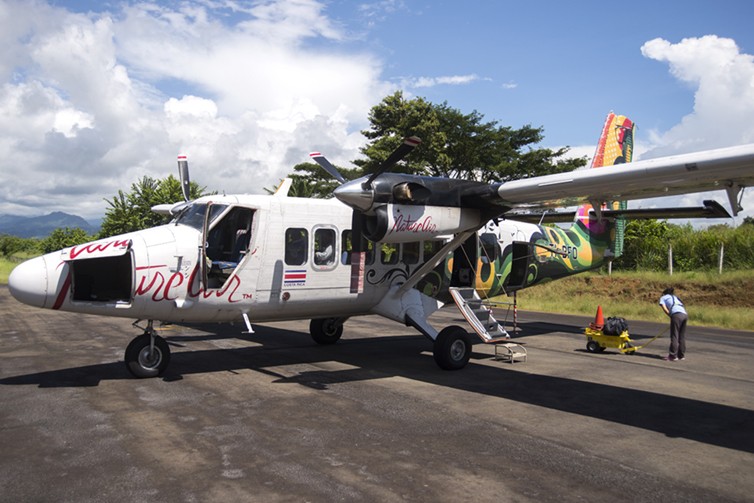
A Nature Air De Havilland Canada DHC-6-300 Twin Otter/VistaLiner at La Managua Airport, Quepos, Costa Rica – Photo: Daniel T Jones
It is easy to find travel sites touting Costa Rica as the new Hawaii for tropical vacation destinations. I had intended to test this theory for some time, and see some sloths and monkeys in the process. Having found a discount fare for my girlfriend and me from Tijuana to San Jos via Guadalajara, my AvGeek/travel skills were put to use to figure out how to get from the Costa Rican capital of San Jos to our intended destination, the Pacific coast town of Quepos.
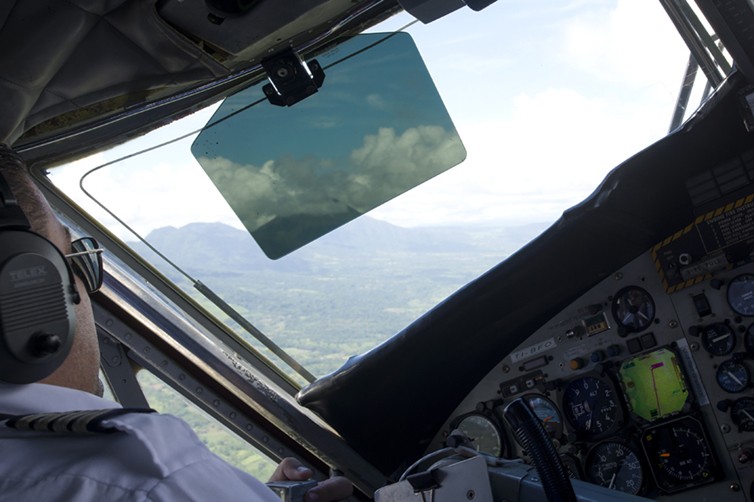
A nice view of Volcán Arenal through the captain’s sun visor – Photo: Daniel T Jones
NATURE AIR: Background & Aircraft
Ten seconds of Googling later, it was readily apparent that roads, road travel, car rentals, and long distance bus service in the country were less than ideal. Not expecting to find many other options, as Costa Rica is a very small country (roughly 80% the size of West Virginia), I was pleasantly surprised to find not one, but two, choices for domestic air travel in the region. SANSA Airlines (Servicios Areos Nacionales S.A.) operates a fleet of eight Cessna 208B Grand Caravans from its hub at Juan Santamaràa International Airport (SJO/MROC). As nice as a ride in a C208 sounds, I decided to go with SANSA’s main competitor, Nature Air.
I chose Nature Air for a few reasons, the most important being that they fly the De Havilland Canada DHC-6 Twin Otter 300, as well as a few Cessna 208Bs – but more on their fleet later. Specifically, they operate the ’œVistaLiner’ model, with oversized windows. As if that weren’t enough to choose them, they have some of the most amazing aircraft liveries you’ll ever see!








